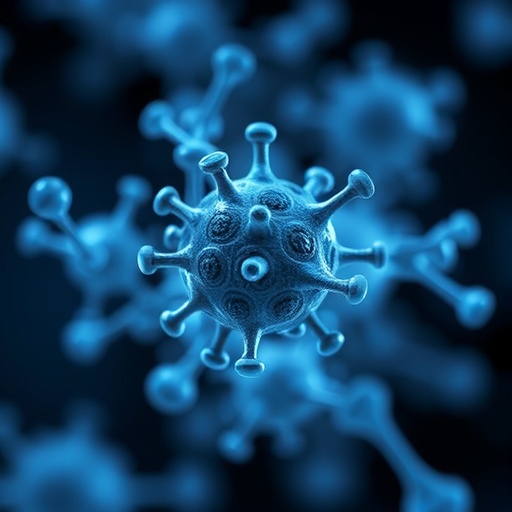In a pioneering study, researchers have begun to unravel the complex relationship between exposure to metal(loid)s and human semen quality, particularly in communities situated near petrochemical complexes. This intriguing exploration sheds light on a pressing public health concern, especially as industrial activities are known to contribute to environmental contamination. As the petrochemical industry expands, the potential for increased human exposure to toxic metals and metalloids raises critical questions about reproductive health and fertility.
Metal(loid)s, such as lead, arsenic, and cadmium, are notorious for their harmful effects on human health. These elements can accumulate in the human body and disrupt various biological processes. Recent investigations into male reproductive health indicate that these contaminants may have adverse effects on semen parameters, including sperm count, motility, and morphology. This research focuses on establishing a clearer connection between these environmental toxins and their impact on male fertility, which remains a somewhat underexplored area in environmental health studies.
The study conducted by Sánchez-Resino, González-Ruiz, and Sierra emphasizes the serious implications of metal(loid) exposure on seminal quality. The research team conducted a preliminary case study at a petrochemical complex, analyzing semen samples from men living in close proximity to the facility. An increase in the levels of these toxins in the environment could parallel an observable decline in semen quality, suggesting a direct link that warrants further investigation.
Men’s reproductive health can provide crucial insights into the broader impacts of environmental pollutants on public health. In regions adjacent to industrial sites, where emissions of hazardous substances can be prevalent, scholars argue for urgent research endeavors to evaluate potential health risks. Previous studies have hinted at a correlation between increased levels of heavy metals in the environment and deteriorations in male reproductive health markers. However, comprehensive and targeted research has been scant, leaving significant gaps in our understanding.
In this unprecedented study, the researchers utilized advanced analytical techniques to measure metal(loid) concentrations in both environmental samples and human serum. This dual approach increases the robustness of the findings, allowing for a more nuanced analysis of exposure routes and the biological consequences of heavy metal accumulation in the human body. Understanding these relationships is key to developing effective public health policies and intervention strategies aimed at reducing exposure to harmful substances.
The findings from this study could potentially change how we approach environmental health, especially regarding reproductive issues. The researchers suggest that industrial practices may need to be reassessed to minimize emissions of toxic metals. This is particularly vital in regions where communities are engaged in family planning and reproductive choices, as heightened exposure to contaminants could have life-altering implications.
Moreover, understanding the biochemical mechanisms underlying the impact of metal(loid)s on semen quality could open new avenues for therapeutic interventions. Investigating the male reproductive system’s response to toxic exposure may lead to innovative strategies aimed at mitigating harmful effects. For instance, could specific antioxidants or chelating agents play a protective role? These questions invite further examination and underscore the vital interdisciplinary collaboration needed between environmental science and reproductive health specialists.
The study highlights urgent environmental issues that may extend beyond individual health, affecting whole communities. With a growing global concern for environmental justice, it becomes paramount that industrial stakeholders, government entities, and health organizations collaborate to establish standards that protect vulnerable populations from toxic exposure. Engaging with local communities about the risks posed by industrial operations can empower individuals to advocate for healthier environments.
As the debate around industrial pollution and public health continues to intensify, this research underscores the necessity of prioritizing environmental exposures in reproductive health studies. Examining how external stressors can ripple through biological systems and influence reproductive outcomes may ultimately reshape public health approaches.
This preliminary research serves as a call to action for additional longitudinal studies that can further elucidate the relation between metal(loid) exposure and semen quality in larger populations. Fostering a collaborative environment among public health officials, scientists, and community stakeholders will cultivate a rigorous scientific inquiry into these critical issues.
Moving forward, the findings prompt a re-evaluation of regulatory frameworks governing industrial emissions. Policymakers need to consider the cumulative effects of pollutants on reproductive health and implement stricter guidelines on emissions that protect not only the environment but the reproductive health of the populations living near industrial complexes.
The implications of this research stretch beyond local communities, addressing a global audience concerned about industrial pollution and reproductive health. As more data emerges, it is crucial that society prioritizes rigorous scientific understanding and utilizes this knowledge to drive health-promoting practices across the populous, ensuring that every individual can aspire to better reproductive health uninhibited by environmental toxins.
The invite for further research and public discourse on this pressing issue underscores the complexity of environmental health dilemmas we face today. As we venture into an era of advanced understanding, the synergy between environmental science and reproductive health can shed light on issues previously hidden beneath the surface. The urgent need to safeguard future generations calls for immediate and sustained action in addressing industrial pollution’s silent harms.
Subject of Research: The association between metal(loid)s and human semen quality.
Article Title: Exploring the association between metal(loid)s and human semen quality: a preliminary case study in a petrochemical complex.
Article References: Sánchez-Resino, E., González-Ruiz, A., Sierra, J. et al. Exploring the association between metal(loid)s and human semen quality: a preliminary case study in a petrochemical complex. Environ Sci Pollut Res (2025). https://doi.org/10.1007/s11356-025-37173-x
Image Credits: AI Generated
DOI: https://doi.org/10.1007/s11356-025-37173-x
Keywords: metal(loid)s, human semen quality, petrochemical complex, environmental health, reproductive health.




